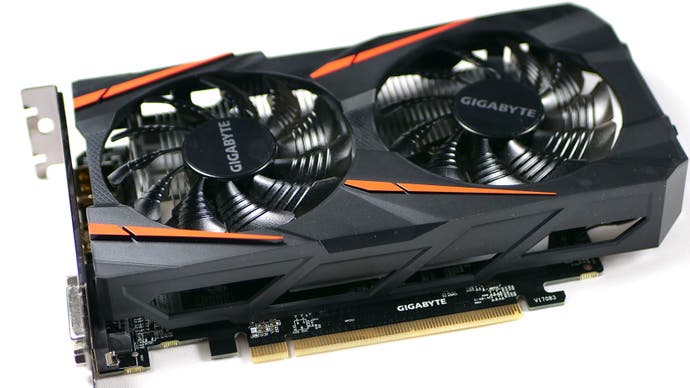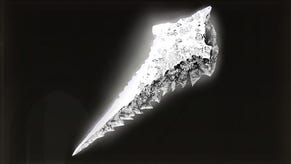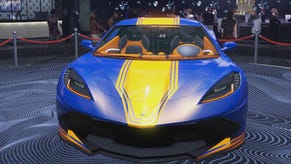AMD Radeon RX 560 benchmarks: the Red Team's budget GPU simply isn't powerful enough
And so many model variations ensures consumer confusion.
At this point, we have to wonder - just how many Radeon RX 560s are on the market? When the graphics card first launched, there were both 2GB and 4GB versions. Some models had additional PCI Express power, some didn't. Some had factory overclocks, while others remained at stock speeds. That's confusing enough, but then a new version of the RX 560 with only 14 of the 16 available compute units enabled appeared - effectively a rebrand of the last generation RX 460. And then, multiple versions of that lower end configuration were unleashed upon the market as well.
So let's help explain the situation by offering some initial recommendations if you are considering an RX 560. First of all, only consider the 4GB models of this card - the 2GB variants simply don't have enough VRAM to be used in modern games at 1080p, and this will continue to be an issue going forward. Secondly, while the boost clocks for the RX 560 are in the region of 1220MHz to 1275MHz depending on the model, only cards with a PCI Express power input will actually be able to reach these speeds on a consistent basis. We tested a Gigabyte board without PCIe power and found that clocks could drop to 1190MHz and then fluctuate - though increasing the power slider using overclocking tool MSI Afterburner did counteract this behaviour.
All of these variations make things unduly confusing for the uninitiated and even make it difficult for us to decide which cards we should actually test. In the end, we decided to test both the 14 and 16 compute unit models of the RX 560, going with 4GB of RAM and equalised clock speeds. This should give you an idea of performance from the very best RX 560 models on the market, with only the compute unit count differing them.
Which GPUs are worth buying? We've made our picks for the best graphics cards available, updated with the latest graphics cards as they're released. As well as an overall performance champ, we name the best value graphics card and best cheap graphics card to guide your next upgrade.
The chief competitors to the RX 560 come from the other major player in the graphics card space, Nvidia, who have also saw fit to offer a range of cards with slightly different specifications and abilities. There are three cards to consider from Team Green: the GTX 1050 2GB, the GTX 1050 3GB and the GTX 1050 Ti. All of the models we tested don't require a PCIe power input, making them a little easier to run with budget power supplies. The more expensive Ti card is the fastest budget GPU on the market, while the cut-down 1050 2GB holds its own remarkably well as the cheapest GPU in our line-up, but occasionally tanks hard with games that with heavier VRAM requirements (Battlefield 1, we're looking at you). The recently released 1050 3GB seemingly offers the best of both worlds, with anywhere from slightly worse to far better performance than the 2GB model at the same RRP - although retail availability in some regions remains distinctly subpar.

- Buy the AMD Radeon RX 560 from Amazon.
So here's our data for the nine titles in our current test line-up. Our benchmark system is pretty advanced, but at the most basic level, the bar charts represent performance data expressed as an average and with bottom-end and top-end frame-rates too. Click on the bar chart to swap between frame-rate and percentage differentials with full mouse-over support. It's pretty cool, but if you're viewing this page on a desktop PC and you want to go even deeper, play the relevant video embed and watch frame-rate and frame-time telemetry play out for each card. You can even use the controls on the right side of the video to add or remove different cards from the real-time comparison.
Assassin's Creed Unity
We begin with Assassin's Creed Unity, the 2014 release of the near-annual series set in Revolution-era France. The game can be a stiff challenge for graphics cards with low amounts of VRAM, but the 4GB on both of our RX 560 cards should be enough to see off the challenge. However, the cards still fall down in comparison to their Nvidia rivals, coming in shy of the playable standard of 30 frames per second. The VRAM-starved GTX 1050 2GB sits just a couple of frames per second than the better RX 560, the GTX 1050 3GB is a few frames faster still, while the GTX 1050 Ti turns in the best result overall at a comfortable 37fps.
AC Unity: 1080p, Ultra High, FXAA
Ashes of the Singularity
Next up we have our first DirectX 12 test, niche strategy game Ashes of the Singularity. This game was a popular benchmark as it offers a good stress test and includes a bevy of options and settings to tweak. AMD cards tend to handle DirectX 12 a little better than their Nvidia equivalents, and indeed we see that the RX 560 cards outclass the GTX 1050 2GB here. However, the newly released GTX 1050 3GB does much better, with a score seven per cent faster than the best RX 560. The GTX 1050 Ti remains the overall winner at 32fps, which is 15 per cent ahead of the best AMD card.
Ashes of the Singularity DX12: 1080p, Extreme, No AA
Battlefield 1
Our third test is Battlefield 1, the 2016 title that focused on the trials of World War 1. As well as its trademark large-scale multiplayer, the game also includes a brief single-player campaign which makes a much more repeatable benchmark. The AMD cards do well here, with the two flavours sitting around 50 frames per second with a slight three per cent difference between them. The GTX 1050 Ti scores about 60 frames per second, while the GTX 1050 2GB shows its VRAM limitations with a dreadful result - whether you're gaming at high or ultra under DX12, it's a slideshow. The GTX 1050 3GB leaves the 2GB model in the dust with a respectable 48fps, nearly equalling the AMD cards.
Battlefield 1: 1080p, Ultra, TAA
Crysis 3
Crysis 3 is still a tough game to run smoothly, even five years after its release, especially on the very high preset that we're using in our tests. The RX 560 models fall behind their Nvidia competition here with the stronger card of the pair achieving just 37fps on average. In contrast, the GTX 1050 cards manage around 43fps and the 1050 Ti hits 47fps. These cards should be able to target 60fps by dropping from very high to high settings, assuming your CPU is up to the task.
Crysis 3: 1080p, Very High, SMAA T2X
The Division
The Division is our next DirectX 12 benchmark. This 2016 game is set in post-pandemic NYC, with impressive graphics and a convincing combination of MMO mechanics and third-person shooter gameplay. Our AMD cards again do better here than in DirectX 11 titles, with a confident 20 per cent lead over the GTX 1050 2GB, which simply doesn't have the VRAM to get the job done. However, the GTX 1050 Ti continues its uninterrupted reign with a solid 33fps with the GTX 1050 3GB following close behind at 31fps.
The Division DX12: 1080p, Ultra, TAA
Far Cry Primal
Next up is Far Cry Primal, the tweener game that sits between the fourth and fifth numbered entries in the popular open-world series. The RX 560s return to their usual position at the bottom of the pile, with both cards recording results around 30fps. Meanwhile, the two Nvidia cards show their dominance with results closer to 40 frames per second. Interestingly, we do have the HD texture pack enabled here, but it doesn't seem to bother the GTX 1050 2GB - in the benchmark, at least. In fact the 3GB version of the card actually shows worse performance at just 37fps, likely due to its limited memory bandwidth.
Far Cry Primal: 1080p, Ultra, SMAA
Ghost Recon Wildlands
Ghost Recon Wildlands is the most recent - and most demanding - title in this version of our benchmark suite, thanks to a punishing ultra preset that outstrips anything we've seen before. Here the GTX 1050 is able to outperform the RX 560 cards despite its limited VRAM, with the 16 Compute Unit version of the card sitting 7 per cent behind the GTX 1050 2GB. The GTX 1050 Ti is once again even further ahead, recording a score of 40 frames per second which works out to a deficit of 20 per cent for the AMD card.
Ghost Recon Wildlands: 1080p, Very High, TAA
Rise of the Tomb Raider
Rise of the Tomb Raider from 2016 is the eleventh game in the Lara-led series that started in 1996. The most recent title supports a ton of modern graphical technologies, ensuring a good workout for our GPUs using the very high preset (with high textures) and SMAA. The better RX 560 draws level with the GTX 1050 2GB here (though the experience is less stable there owing to a lack of RAM), while the GTX 1050 3GB has a small but comfortable lead. Meanwhile, the GTX 1050 Ti cruises ahead with a leader of more than 15 per cent over the RX 560.
Rise of the Tomb Raider: 1080p, Very High, SMAA
The Witcher 3
The Witcher 3 remains an incredibly popular title that also provides a unique graphical challenge, making it a strong choice for our benchmark suite. Unfortunately, the AMD Radeon RX 560 cards don't perform well in this game from 2015, with a five per cent gap to the GTX 1050 and 15 per cent to the GTX 1050 Ti. In addition to poor average frame-rates, the RX 560 cards also have terrible stutter, which simply doesn't materialise at all on either of the Nvidia offerings.
The Witcher 3: 1080p, Ultra, POST-AA, No Hairworks
Generational comparison
We'll conclude with a look at how the RX 560 compares to its AMD family members, including the higher-end RX and Vega graphics cards and the older R9 Fury X. It's worth bearing in mind that these are all higher-end components than the RX 560, so don't expect miracles even though some time has passed since they were released.
Assassin's Creed Unity: Ultra High, FXAA
We hope these words, live charts and illustrative photos have made this confusing collection of graphics card models a little easier to understand. For more information, you could have a look at our review of the RX 460, the RX 560's immediate predecessor.
Now that you've seen the benchmarks for one card, why not check out see which PC hardware we recommend to our friends and family? Here are the DF picks for the overall best graphics cards and for the best gaming monitors on the market.









